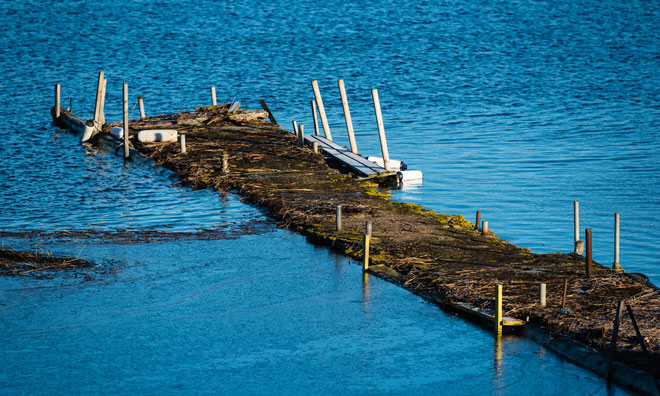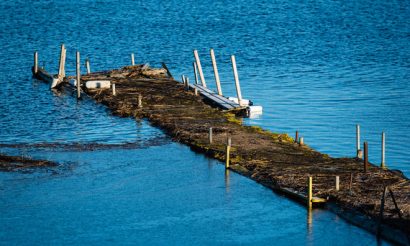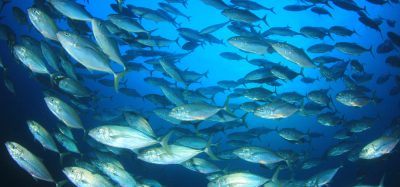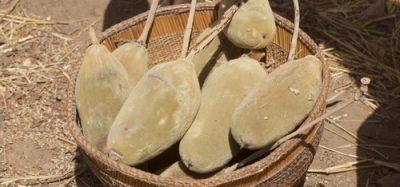Food security threatened by sea-level rise
- Like
- Digg
- Del
- Tumblr
- VKontakte
- Buffer
- Love This
- Odnoklassniki
- Meneame
- Blogger
- Amazon
- Yahoo Mail
- Gmail
- AOL
- Newsvine
- HackerNews
- Evernote
- MySpace
- Mail.ru
- Viadeo
- Line
- Comments
- Yummly
- SMS
- Viber
- Telegram
- Subscribe
- Skype
- Facebook Messenger
- Kakao
- LiveJournal
- Yammer
- Edgar
- Fintel
- Mix
- Instapaper
- Copy Link
Posted: 18 January 2017 | NIBIO – Norwegian Institute of Bioeconomy Research | 1 comment
Food security to be threatened by significant seal-level rise in a report based upon findings by the Norwegian Institute of Bioeconomy Research…


Coastal countries are highly prone to sea-level rise, which leads to salt-water intrusion and increased salinity levels in agricultural land.


Also typical for these regions are floods and waterlogging caused by cyclones and typhoons, as well as prolonged drought periods.
All these climate related issues play a major role in rendering agriculture in these areas, rice production in particular, increasingly difficult.
Hot spots for climate change impacts
According to the World Bank, salinity issues in Bangladesh will most likely lead to significant shortages of drinking water and irrigation by 2050. It is also estimated that increased soil salinity, both in coastal and inland areas, may result in a decline in rice yield by 15.6 percent, thus reducing the income of the affected farmers significantly.
“Very few seed varieties on the market are able to tolerate the high salt levels…”
The situation is similar in Vietnam where coastal areas are already suffering from sea-level rise and saline intrusion. Vietnam also experiences strong storm surges, rising temperatures and variability in the seasonality of rainfall.
“Due to their extensive coastline and many river deltas, countries like Bangladesh and Vietnam are hot spots for climate change impacts such as sea-level rise and salt water intrusion,” says Dr Udaya Sekhar Nagothu from the Norwegian Institute of Bioeconomy Research, NIBIO.
“High levels of salt in agricultural soil or irrigation water make it difficult for salt sensitive rice plants and other crops to absorb water and necessary nutrients, and as a result, plant growth is suppressed and crop yields significantly reduced.”
Call for more salt-tolerant rice varieties
Lately, several farmers in the Mekong and Red River deltas in Vietnam, as well as local authorities, have been reporting increased salinity levels in their soil and irrigation waters. For many, this has caused damage to their properties, as well as loss of livelihoods and income.
Dr Nagothu has coordinated several research projects looking at future climate change impacts on rice production in South and Southeast Asia. He says that more targeted research is needed to address salinity related problems. The development of salt-tolerant rice and crop varieties accessible to smallholder farmers is particularly important.
“As of now, very few seed varieties on the market are able to tolerate the high salt levels that farmers in these regions are experiencing,” Dr Nagothu says. “The salt-tolerant rice varieties developed so far are not good enough to meet the high salinity levels. They are also expensive, and thus, unavailable to most smallholder farmers.”
Climate-smart agriculture
In addition to developing new rice varieties, other measures that can be carried out include the implementation of crop rotation systems, soil salinity management using raised seabeds, and changing the date of sowing. In some regions, a shift from rice production to shrimp cultivation in ponds is being taken up by farmers, as brackish water shrimp tolerates higher salt levels than most rice varieties.
Good policy support and capacity building, as well as further investments, are key to develop and put these measures into practice at a larger scale
“To flush out salts from soils in an adequate way, fresh water and a proper drainage system is required,” Dr Nagothu says. “Although drainage channels in the saline affected areas do exist in provinces such as Nam Dinh and Soc Trang in Vietnam, the lack of fresh water due to long drought periods actually render them useless.”
Improved water and soil management
In the Vietnamese Red River Delta, salt water can intrude 30 to 40 kilometres inland, followed by high water levels in the riverbeds and increased sedimentation in canals and flooded plains. During the dry season, seawater moves even further inland due to lack of fresh water in the canal. As a result, paddy fields are exposed to high salinity levels in the dry season, making large tracts of productive land unfit for crop cultivation.
The situation in southern Bangladesh is similar, where various measures to meet these issues have been tested.
“In Bangladesh, one successful measure has been an aquifier recharge which collects fresh water during the rainy season for use in the dry season. This, in combination with improved soil management, can greatly benefit agricultural land vulnerable to salt water intrusion,” Dr Nagothu says.
Need for an advance in science
Through the ClimaViet project, Dr Udaya Sekhar Nagothu and his colleagues have engaged provincial authorities in a series of stakeholder workshops in order to share project results, technology options, capacity building needs and to explore investment alternatives.
Farm testing of salt tolerant rice varieties under different soil and water regimes, training and raising awareness among farmers, as well as developing policy guidelines, have also been important aspects of the project.
According to Dr Nagothu there is a need for an advance in science concerning new rice varieties, alternative cropping systems, physical infrastructure preventing sea-level rise and how to upscale production in line with a growing population.
A more hands-on approach from local policy makers is also necessary. Although they acknowledge the issues at hand, adequate funding is rarely provided for research on the development and upscaling of salinity management measures.
“Developing new seed varieties is expensive. Without sufficient funding, developing more salt tolerant rice and other crop varieties is very difficult,” Dr Nagothu says, and adds, “saline levels in soils and irrigation waters in coastal areas are steadily increasing, and it is vital that something is done about it before the situation gets out of hand.”










The problem is human overpopulation.
Let’s have a look at “Google Maps”. On the left bottom of the website you will find the button “Earth”. Then you can have a look at our planet. And it’s really shocking. Our global impact on Earth’s geology and ecosystems is that significant that sciencists already proposed a new epoche, called Anthropocene. We already need more than 1 Earth. On “Google Maps” you will hardly find any untouched forests. Instead you will find fields and cities almost everywhere.
Of course overpopulation causes a lot of problems. Scientists say, from 2050 onwards we won’t have enough food to feed everyone on Earth. Food prices will increase. Poor people will be forced to buy cheaper genetically edited or modified foods.
I think we should try to reduce the human world population to 3 or 4 billion people. Then Earth should be able to reestablish a natural balance.
I am ready to help.